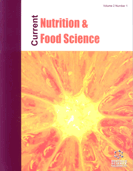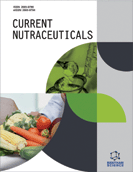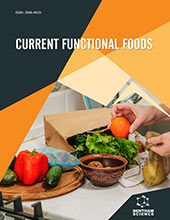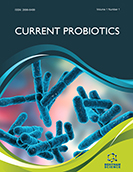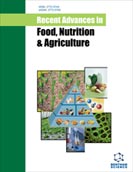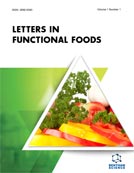Abstract
Cooked beans of two wild legumes (Canavalia cathartica and C. maritima) were subjected to solid-substrate fermentation by Rhizopus oligosporus and bioactive potential has been compared with raw and cooked beans. Flavonoids and canavanine in raw beans were significantly decreased on cooking, while they were significantly enhanced in fermented beans. Phytic acid content was signficantlty decreased from raw vs. cooked vs. fermented beans. Raw, cooked and fermented beans were devoid of trypsin inhibitors. Hemagglutinin activity of raw beans was completely eliminated on cooking, while SSF increased its activity about 50% of raw beans against A+ve and or B+ve blood groups. Solid-substrate fermentation of cooked beans with R. oligosporus resulted in better nutraceutical potential compared to raw and mearly cooked beans qualifying as important nutraceutical source to develop indigenous value-added products.
Keywords: Canavalia, wild legumes, coastal sand dunes, bioactive compounds, solid-substrate fermentation, Rhizopus oligosporus.
Current Nutrition & Food Science
Title:Improvement of Bioactive Potential of Canavalia Beans of Coastal Sand Dunes by Solid-Substrate Fermentation Using Rhizopus oligosporus
Volume: 10 Issue: 4
Author(s): Vedavyas R. Niveditha, Kandikere R. Sridhar and Kaori Tomita-Yokotani
Affiliation:
Keywords: Canavalia, wild legumes, coastal sand dunes, bioactive compounds, solid-substrate fermentation, Rhizopus oligosporus.
Abstract: Cooked beans of two wild legumes (Canavalia cathartica and C. maritima) were subjected to solid-substrate fermentation by Rhizopus oligosporus and bioactive potential has been compared with raw and cooked beans. Flavonoids and canavanine in raw beans were significantly decreased on cooking, while they were significantly enhanced in fermented beans. Phytic acid content was signficantlty decreased from raw vs. cooked vs. fermented beans. Raw, cooked and fermented beans were devoid of trypsin inhibitors. Hemagglutinin activity of raw beans was completely eliminated on cooking, while SSF increased its activity about 50% of raw beans against A+ve and or B+ve blood groups. Solid-substrate fermentation of cooked beans with R. oligosporus resulted in better nutraceutical potential compared to raw and mearly cooked beans qualifying as important nutraceutical source to develop indigenous value-added products.
Export Options
About this article
Cite this article as:
R. Niveditha Vedavyas, R. Sridhar Kandikere and Tomita-Yokotani Kaori, Improvement of Bioactive Potential of Canavalia Beans of Coastal Sand Dunes by Solid-Substrate Fermentation Using Rhizopus oligosporus, Current Nutrition & Food Science 2014; 10 (4) . https://dx.doi.org/10.2174/1573401311666141204221630
| DOI https://dx.doi.org/10.2174/1573401311666141204221630 |
Print ISSN 1573-4013 |
| Publisher Name Bentham Science Publisher |
Online ISSN 2212-3881 |
 10
10
- Author Guidelines
- Bentham Author Support Services (BASS)
- Graphical Abstracts
- Fabricating and Stating False Information
- Research Misconduct
- Post Publication Discussions and Corrections
- Publishing Ethics and Rectitude
- Increase Visibility of Your Article
- Archiving Policies
- Peer Review Workflow
- Order Your Article Before Print
- Promote Your Article
- Manuscript Transfer Facility
- Editorial Policies
- Allegations from Whistleblowers
- Announcements
Related Articles
-
Diet, Cardiometabolic Factors and Type-2 Diabetes Mellitus: The Role of Genetics
Current Diabetes Reviews Recent Advances in Small Animal Cardiac Magnetic Resonance Imaging
Current Cardiology Reviews Putative Immune Regulatory Role of Statins
Current Immunology Reviews (Discontinued) Renal Phosphate Handling in Antiretroviral-naive HIV-Infected Patients
Infectious Disorders - Drug Targets Cardioprotector Activity of an Esteroidal Saponin: A Scientific and Technological Prospection
Recent Patents on Biotechnology Interplay of Breast Cancer Resistance Protein (BCRP) and Metabolizing Enzymes
Current Drug Metabolism Systemic Fungal Infections Caused by Candida Species: Epidemiology, Infection Process and Virulence Attributes
Current Drug Targets PDE5 Inhibitor Treatment Options for Urologic and Non-Urologic Indications: 2012 Update
Current Pharmaceutical Design Association of Low BMI with Aortic Stiffness in Young Healthy Individuals
Current Hypertension Reviews A Case-Control Study Investigating the Effect of MTHFR C677T Variant on Performance of Elite Athletes
Endocrine, Metabolic & Immune Disorders - Drug Targets Longevity Depends on a Balance Between Proinflammatory and Anti-Inflammatory Factors: Use of Tcms and Natural Products
Current Drug Discovery Technologies Effects of Lipid-Lowering Drugs on Adiponectin
Current Vascular Pharmacology Nanotechnology and Atherosclerosis Imaging: Emerging Diagnostic and Therapeutic Applications
Recent Patents on Cardiovascular Drug Discovery Clinical, Molecular- and Cytogenetic Analysis of a Case of Severe Radio- Sensitivity
Current Genomics Pharmacogenomics of Oral Antithrombotic Drugs
Current Pharmaceutical Design Pitavastatin Combined with Ezetimibe Treatment was an Effective Approach to Non-IRA Lesion of ST-segment Elevation Myocardial Infarction Patients with Primary Percutaneous Coronary Intervention
Current Pharmaceutical Biotechnology Aspirin Resistance in Cardiovascular Disease: Pathogenesis, Diagnosis and Clinical Impact
Current Pharmaceutical Design Targeting Lung Inflammation: Novel Therapies for the Treatment of COPD
Current Respiratory Medicine Reviews Homeobox Genes and Human Genetic Disorders
Current Molecular Medicine Inflammatory Arthritis and Heart Disease
Current Pharmaceutical Design


